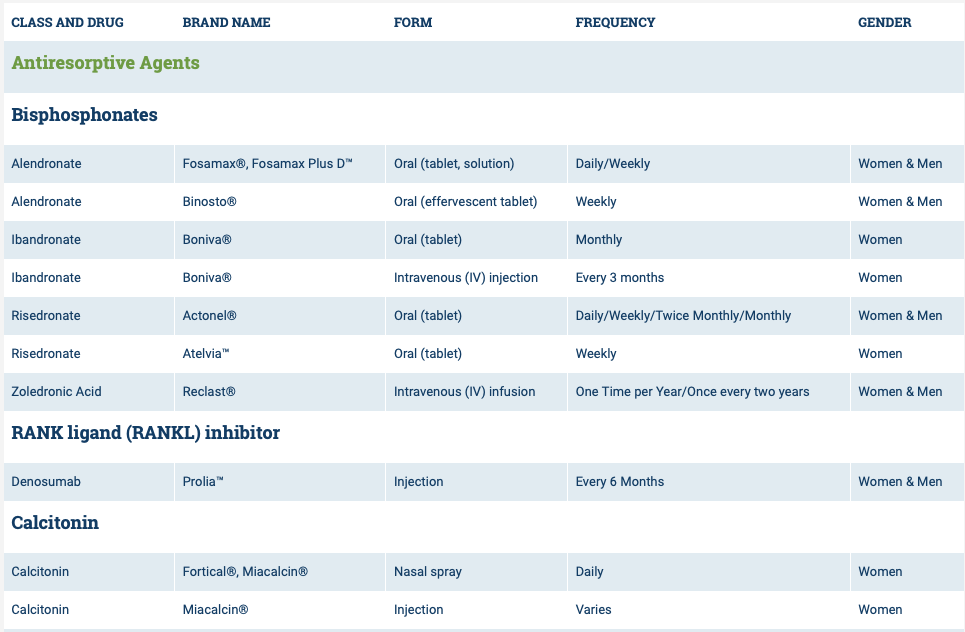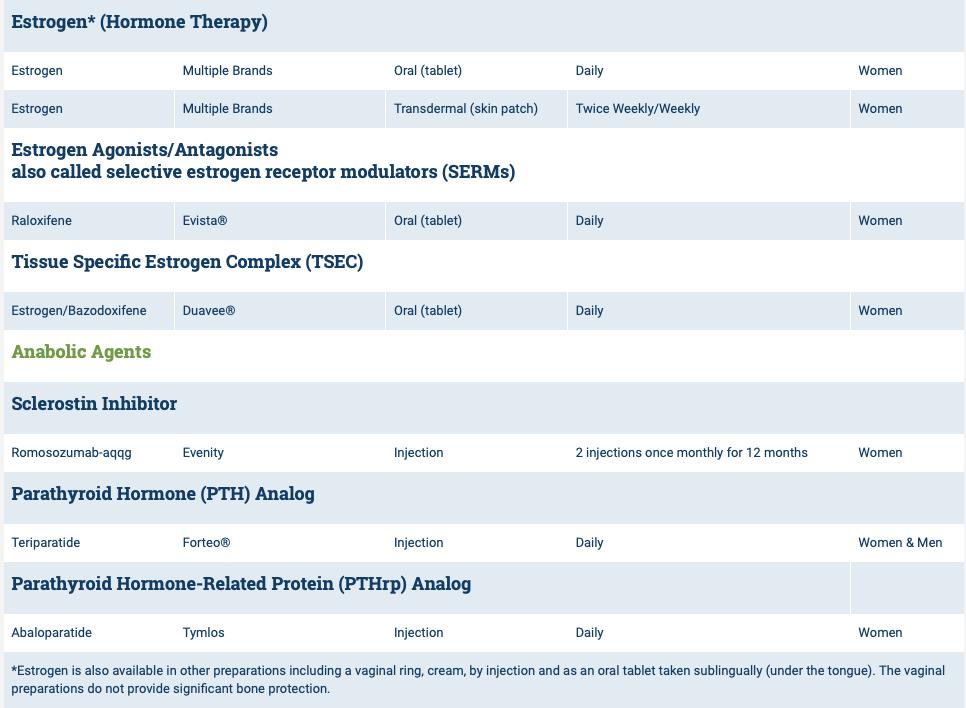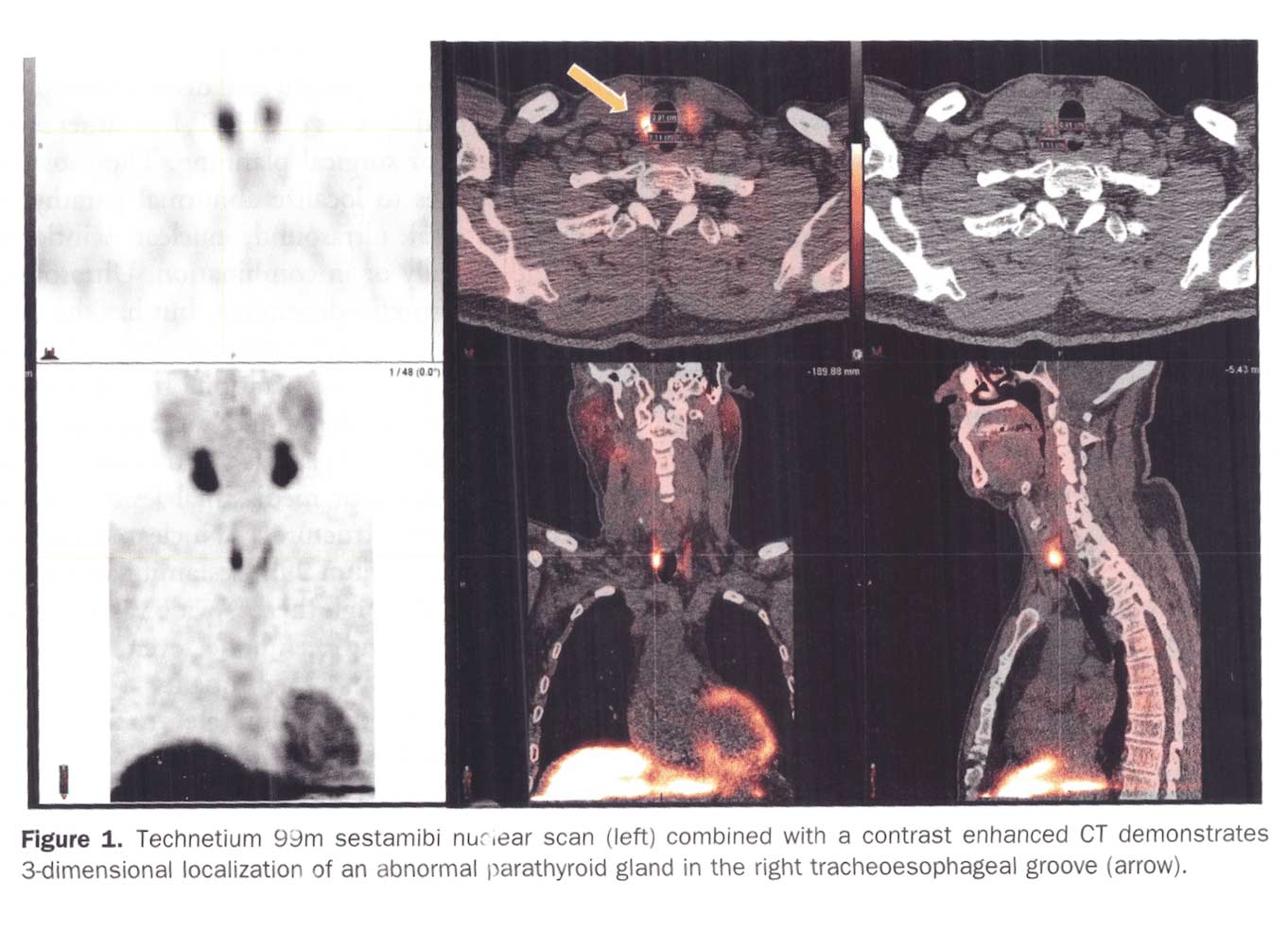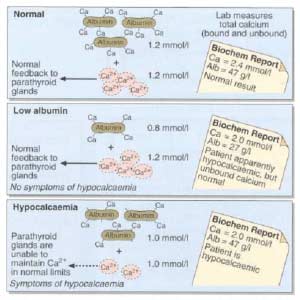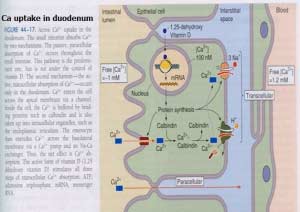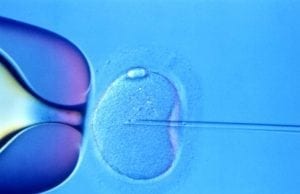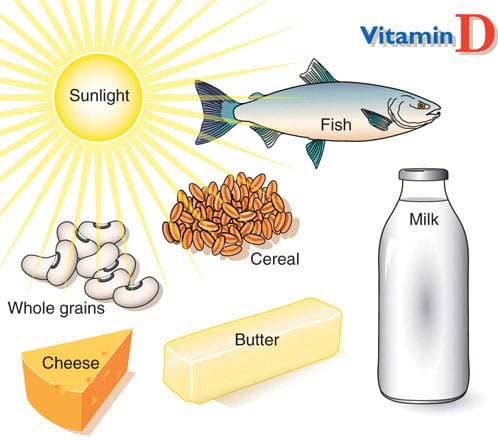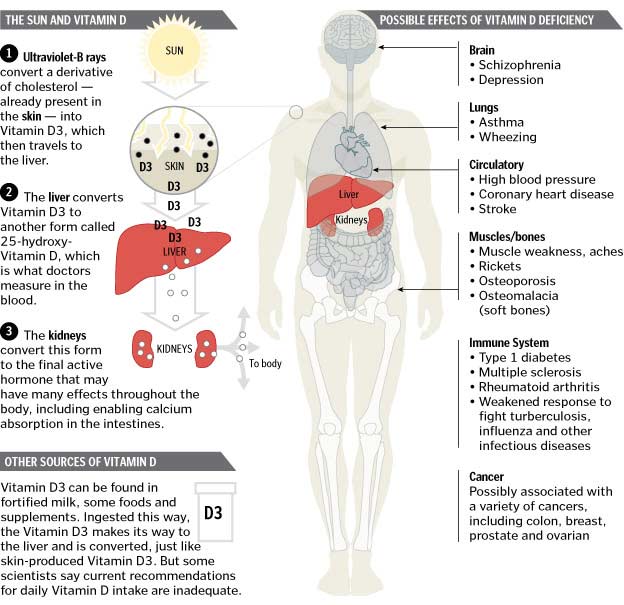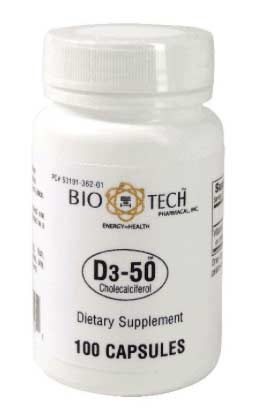Tag: Vitamin D
Osteoporosis Medications, Action and Side Effects
May 25, 2019 3:40 pm
Treatment options should be approached is a global and systemic fashion. It is critical that the nutritional status is at its best possible and optimized for important healthy bone vitamins and minerals. Low protein needs to be corrected. Special attention should be given to nutrients, minerals and vitamins. These include Protein, Calcium, Magnesium, Vitamin D, and Vitamin K1/K2to name a few.
Healthy bones require ongoing and routine force in the form of exercise to remain health. Just as exercise improves muscle strength, it also improves bone health. Exercise is also critical in improving bone structure and density. Ideally, exercise should be weight bearing and resistance. Examples include: hiking, walking, jogging, climbing stairs, playing tennis, and dancing. Resistance type exercise is weight lifting and resistance bands. These exercise work by creating a pull or force on the bone either by gravity, movement or weight. Always check with your physician before beginning an exercise routine, start slowly and building up to longer periods of time. The ideal goal would be at least 30 minutes a day, every day, if you are able.
We frequently see patients immediately started on osteoporosis medications without checking or improving some of the nutritional markers noted above or without looking at exercise history. In some case, the medication recommended are contraindicated due to nutritional status.
The medications can be grouped in to those that help with new bone formation (Anabolic agents) or those that help by suppressing the bone breakdown phase (Antiresorptive agents).
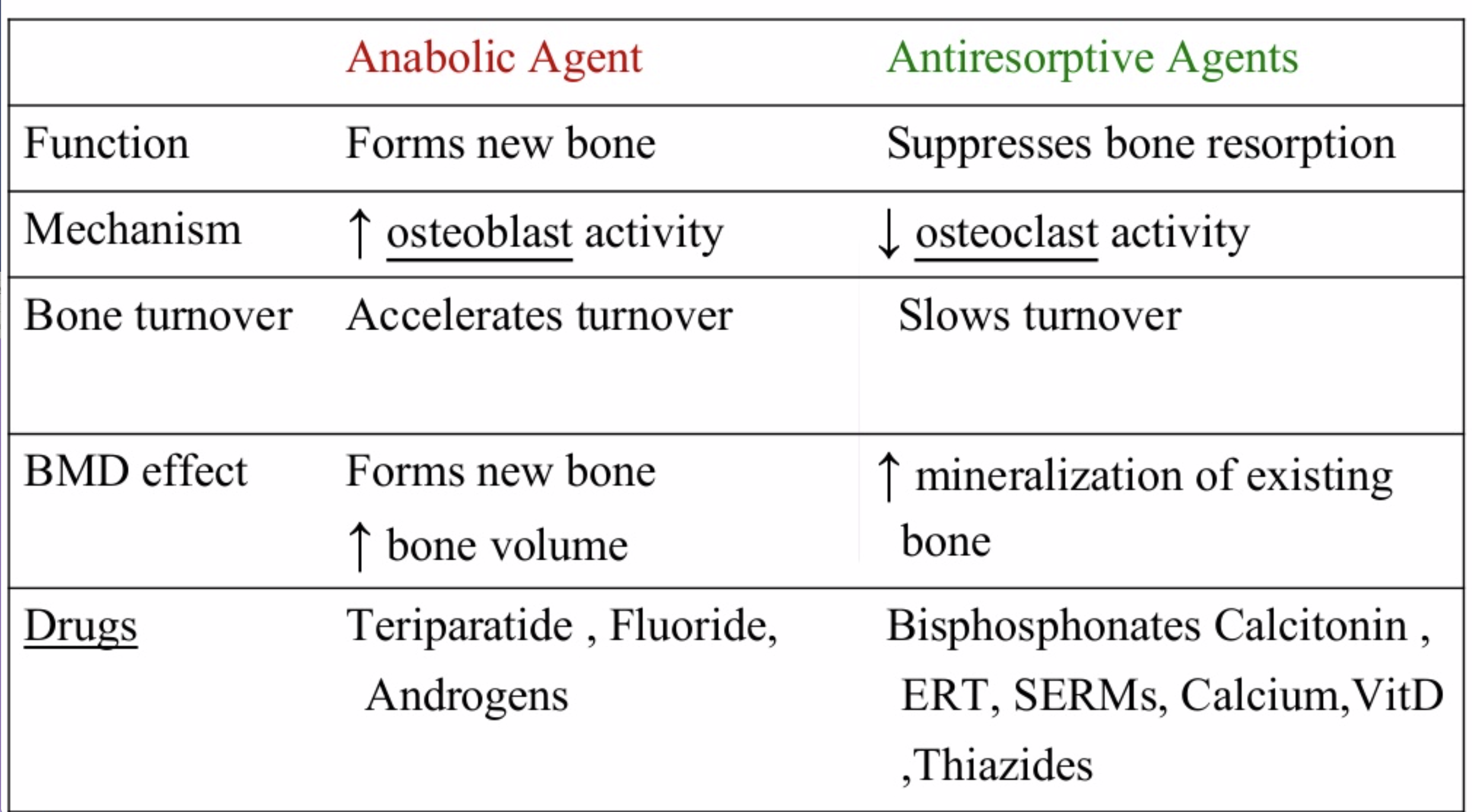
National Osteoporosis Foundation has an exhaustive list (below) of medications for treatment of Osteoporosis.
The table below outlines the side effects and mechanism of the actions of the common medications used for treatment of osteoporosis which was published by the University Health News Publication on August of 2014.
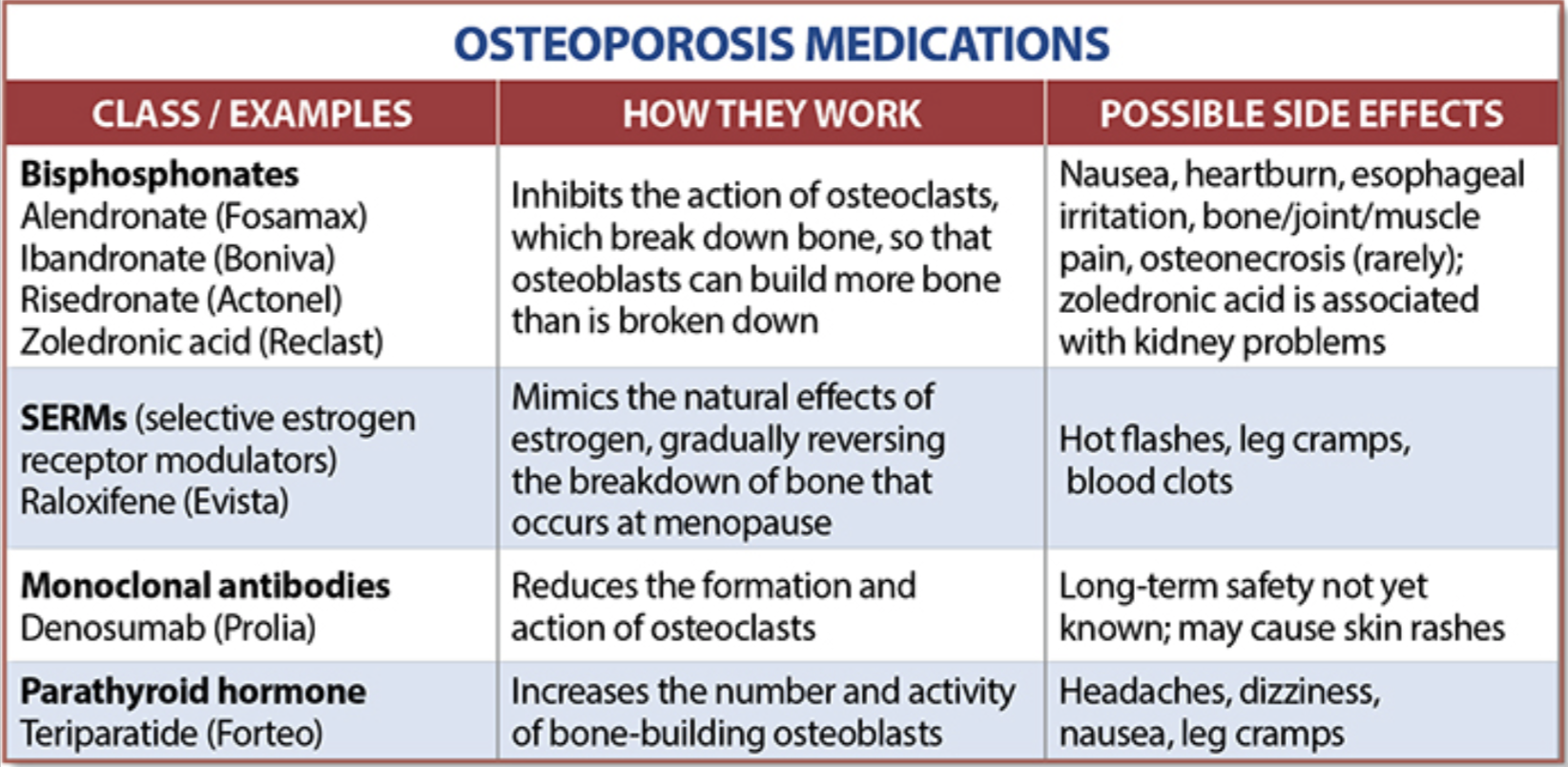
With all this information, the few points to remember is that the most important factors in healthy bone structure are the nutritional status Protein, Calcium, Magnesium, Vitamin D, and Vitamin K1 levels.
This is an animation of normal bone Metabolism. It shows how bone structures is taken down and rebuilt continuously. This allows for a healthy bone maintainence as we age. The key is the balance of breakdown (osteoclast) and the build up (osteoblast) activity is regulated. Osteoporosis develops when there is more breakdown that build up. 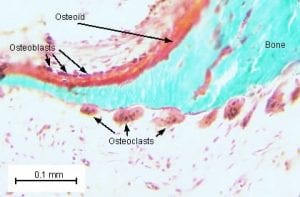
With permission of Dr. Susan Ott of University of Washington.
Additional information available on her site.
Past blogs on Bone Health.
Parathyroid Scan
July 09, 2018 11:48 am
A Parathyroid scan or Sestamibi scan may be needed if the typical weight loss surgical reasons for elevated PTH levels have been addressed. Sestamibi is a small protein which is labeled with the radio-pharmaceutical technetium-99. This very mild and safe radioactive agent is injected into the veins of a patient with overactive parathyroid and is absorbed by the overactive parathyroid gland. If the parathyroid is normal it will not absorb the agent. The scan below shows the uptake of the agent.
Calcium, Vitamin D and Parathyroid hormone are routinely measured on yearly follow up for most post weight loss surgical (WLS) patients. Elevated parathyroid hormone (PTH) may be caused by Vitamin D deficiency or calcium deficiency (most common in post WLS) or by over active parathyroid gland(s). In the latter case, if one of the four glands is overactive then this is knows as a parathyroid Adenoma. If all 4 are over active and are secreting too much PTH, this is known as hyperplasia. Ultrasound of the neck, may identify an enraged parathyroid gland (adenoma) which is located behind the thyroid gland. Given the large area where the parathyroid gland may be located, additional tests are needed to not only identify the location of the gland(s) but also to distinguish between single gland (adenoma) or multiple glands (hyperplasia) cause for the elevated PTH. It is important to investigate all avenues and testing in parathyroid hormone elevation and in some cases, not to rely on one test for your diagnosis. It is also imperative that weight loss surgical patients take their supplements routinely and consistently and have their laboratory studies followed at least yearly.
Calcium Lab Results
June 05, 2018 3:26 pm
Calcium is measured to evaluate function and adequacy of a physiologic processes. Calcium plays a critical role in several body functions such as, coagulation pathways, bone health, nerve conduction, and other functions. It is important whenever you are evaluating laboratory results that you look at the whole picture of the person, including medications, other laboratory studies and health history. One value is not a stand alone result. There are many factors that effect calcium results.
Factors that effect calcium results: (not an all inclusive list)
pH
Albumin
Lactate
Heparin
Anticonvulsants
Renal Disease
Pancreatitis
The two most common issues following Weight loss Surgery or Duodenal Switch may be albumin level and Vitamin D level. Please see past blogs on Vitamin D. Magnesium may also play a role in a Duodenal Switch patient.
The most common calcium result drawn is the total calcium level. Laboratory results may not explicitly label it as such, however, it measures the calcium that is bound to protein. Ionized calcium is the free calcium that is representative of the true total calcium. Ionized Calcium can be measured by ordering specific lab. Alternatively, the Ionized calcium can be calculated by the following formula: Corrected calcium mg/dL = (0.8 * (Normal Albumin – Pt’s Albumin)) + Serum Ca ) or use the calculator at the bottom of this post.
The low Albumin level accounts for the low calcium level. This may be the reason for a patient with a low albumin/protein level, also having their calcium level reported as low. However, when adjusted for the protein deficiency the corrected calcium comes into normal range. Video of Trouseau’s sign of a patient with calcium deficiency.
The first step in a patient who has low calcium reported, is to make sure their protein and albumin levels are normal, along with Vitamin D.
Calcium levels are managed by two processes major regularly hormones and influencing hormones. Controlling or major regulatory hormones include PTH, calcitonin, and vitamin D. In the kidney, vitamin D and PTH stimulate the activity of the epithelial calcium channel and the calcium-binding protein (ie, calbindin) to increase calcium absorption. Influencing hormones include thyroid hormones, growth hormone, and adrenal and gonadal steroids.
Further information on protein.
Further information on calcium.
Videos/Webinars on several of the above topics.
Corrected calcium = 0.8 * (4.0 – serum albumin) + serum calcium
Compounding Pharmacies
January 22, 2018 2:38 pm
New FDA regulations for compounding pharmacies has spurred changes in our pricing and ability to provide injectable Vitamin A and Vitamin D. The compounding pharmacies are no longer compounding injectable Vitamin A and there is a nationwide shortage of the national brand of injectable Vitamin A. We have a tentative date of February 2018 when we may be able to obtain injectable Vitamin A. We won’t be able to quote pricing on Vitamin A injections until we are able to orders.
We are able to obtain and supply our patients with injectable Vitamin D but with a price increase.
The following is the letter we received from our compounding pharmacy.
“The healthcare industry has continuously undergone changes in regulations and legislation. The compounding industry is no exception and has faced rigorous regulatory requirements this past year such as new testing specifications and compliance standards.
We are set on facing these demanding challenges by meeting and exceeding these new regulatory requirements. We want to assure you we will continue to provide the best products on the market for you and your patients. Quality and safety remain a top priority. We understand that our pharmacy plays a vital role in providing care to your patients. The increase in pricing is a reflection of the additional cost in producing and testing the product based on regulatory specifications.”
Compounding Pharmacy
March 22, 2017 7:40 pm
We have received notice that the FDA and the compounding pharmacy have changed their regulations for several medications. Unfortunately, this affects our office and Duodenal Switch patients in regards to injectable Vitamin D and Vitamin A. In the past, we have been able to have injectable Vitamin A and injectable Vitamin D in bulk in our office. The new regulations require that a patient be assigned to the medication, so we will be unable to have it on hand in our office. This is out of our hands and control.
We are requesting that if you are anticipating the need for injectable vitamins that you have your laboratory results in our office at least 3 weeks prior to your office visit. This will give our staff adequate time to order your injectable vitamins to be available at your visit.
Injectable Vitamin D may be needed in some cases of Vitamin D deficiency or inability to increase Vitamin D level with oral supplements. Vitamin D is a fat soluble vitamin. It plays an important role in bone metabolism and structure. It has also been found to affect the immune regulation, control off- inflammatory reactions, and also be involved in a number of broad cellular functions throughout the body.
Research and information regarding Injectable Vitamin D.
Thank you for your understanding in this manner.
Exercise Benefits & Events
August 09, 2016 2:25 pm
Exercise and it’s benefits for body, mind and weight loss can’t be over emphasized. Everyone can benefit from some form of exercise whether it be a brisk walk, chair exercises, exercise bands, aquatics, running, hiking or biking. As a family we try to exercise often and attempt to participate in at least one event a month or so. These types of events tend to keep us more accountable and motivated. The group atmosphere, energy and vibe only add to the experience. Listed below are some of our favorite exercise events. We will update this list and add to it.
Physical Benefits:
- Weight loss and maintenance can be a benefit of exercise. It also improves muscle function and strength.
- Improves Type 2 Diabetes and Metabolic Syndrome
- Reduces some Cancer Risk
- Improved Cardiovascular Health
- Improved “Good” cholesterol
- Strengthens and improves Bone Health
- Living longer
- Improved Sleep
Mental Health Benefits:
- Reduce Stress
- Boosts Endorphins
- Helps with Anxiety
- Improved Self Confidence
- Being in the Great Outdoors and Sunlight (increases Vitamin D)
- Prevent Cognitive Decline
- Sharpen Memory and Cognitive Function
- Help with Addiction
- Increase Relaxation
One important key note is to pay close attention to hydration with exercise, not only with fluids but electrolytes as well. Exercise increases fluid loss due to sweat and increase circulation to muscle. You need to increase fluid intake to compensate for these losses.
Exercise events by the month:
June
The Los Angels River Ride is one of our families favorites. Great ride for a great cause.
August
Luau 5K walk and fun run This is a fun family activity as they have a kids run and lots of activities. It is also in Griffith Park which is a beautiful and treasured location.
September
The Prudential 401K Run is to promote saving for retirement and is a FREE event at the beautiful Rose Bowl
October
The Aloha Run brings a little Hawaiian feel to the fall.
JDRF One Walk fighting Type I Diabetes
November
City of Hope’s Walk for Hope
December
Santa to the Sea (must bring a gift for a child)
Varying months depending on location:
Get your Rear in Gear to fight Colon Cancer
CicLAvia a Los Angeles area quarterly biking event.
Vitamin D status for Infertility Treatment
August 03, 2016 8:02 pm
Many people with obesity face infertility issues and seek infertility treatment or procedures. A recent article linked Vitamin D status to improved success rate of IVF (in-vito fertilization) & ICSI (interacytoplasmic sperm injection) in The Journal of Maternal-Fetal & Neonatal Medicine. It is important to check Vitamin D status for infertility treatment.
Here are the researchers results:
- Of the 252 females that completed the ICSI cycle, 42% became pregnant (n = 108).
- The mean vitamin D status was significantly higher in the pregnant group compared to the non-pregnant group (17.74 ng/ml vs 9 ng/ml, respectively; p = < 0.01).
- Vitamin D status was positively associated with both pregnancy (p = 0.001) and endometrial thickness (p < 0.01).
- Higher vitamin D levels was associated with a 21% increase odds of clinical pregnancy (p < 0.05).
The researchers concluded,
“Deficiency of 25-OHD in females hinders the accomplishment of optimal endometrial thickness required for implantation of embryo after ICSI.”
Following weight loss surgery (WLS) there can be improvement of fertility and for that reason we recommend two forms of birth control methods during the first 18-24 months following WLS or until weight loss has stabilized for several months. This helps to ensure the best outcome and health for the mother and infant.
In our office we continue to stress the importance of Vitamin D3 for bone and dental health, pregnancy, breastfeeding and several auto-immune diseases. Vitamin D has also been shown to reduce pre-term birth Duodenal Switch patients require a dry water miscible form of Vitamin D3 due to the fat malabsorption of the DS procedure. There are several past blog posts on the topic of Vitamin D and it’s associated nutrients.
Magnesium QuestionsExclusive Member Content
May 11, 2016 6:07 am
Vitamin D2 Vs D3
March 24, 2016 9:17 am
Thank you to Contributor: Mariam Michelle Gyulnazaryan
Vitamins are organic, essential nutrients that are necessary to keep your body in good health. Most vitamins must be obtained through diet because they cannot be synthesized in the body. However, the human body is able to make its own vitamin D in the skin through sun exposure or it can be obtained by food and supplements of Vitamin D3.
Vitamin D is a fat-soluble vitamin that is responsible for regulating muscle contraction, immune function, bone health, and intestinal absorption of magnesium, calcium, phosphate, iron, and zinc. Good sources of Vitamin D include sun exposure, dairy products, fatty fish, fortified orange juice, cod liver oil, mushrooms, and supplements.
There are two types of Vitamin D: D2 (ergocalciferol) and D3 (cholecalciferol). Both types have the same mechanism of action, but different sources and kinetics.
Ergocalciferol is easily obtained through Vitamin D-rich foods in normal anatomy. However, a post Duodenal Switch patient will have less absorption of Vitamin D via food due to fat malabsorption. Ergocalciferol is hydroxylated to ercalcidiol [25(OH)D2] in the liver. Its second hydroxylation takes places in the kidney, where it is converted to the active form of Vitamin D2 known as ercalcitriol [1,25(OH)2D2]. Now in it’s active form, Vitamin D2 can bind to the Vitamin D receptor (VDR) and help the body where it’s needed.
In the epidermis of the skin, precursor 7-dehydrocholesterol (7-DHC) forms cholecalciferol as a result of UVB radiation. Several factors such as increased skin pigmentation, age, and sunscreen application reduce the skin’s production of choleciferol (6). Cholecalciferol is hydroxylated in the liver to become calcidiol [25(OH)D3]. It is then moved to the kidney for further hydroxylation to Vitamin D3’s active form known as calcitriol [1,25(OH)2D3], also called calcifediol. The active form allows binding to VDR for biological activity.
Both forms of Vitamin D have been shown to effectively increase 25(OH)D levels. Research shows that after administering a single dose of 50,000 international units (IU) Vitamin D2 or D3, both experienced a similar increase in serum 25(OH)D concentration. However, Vitamin D2 levels rapidly declined while Vitamin D3 levels remained high (1). Further studies have confirmed that Vitamin D3 is more effective in elevating and maintaining 25(OH)D levels for a longer amount of time (5). Scientists believe the most reasonable explanation for Vitamin D3’s substantial efficacy is its higher affinity to metabolites, which results in a longer circulating half-life than Vitamin D2 making it more potent(4). For a post Duodenal Switch patient, due to fat malabsorption, it is important to use “Dry” Water Miscible form of Vitamin D3.
A 25-hydroxy Vitamin D blood test is the most accurate way to measure levels. A level between 20 ng/mL-50 ng/mL may be considered sufficient, however in our bariatric practice we would like to keep the levels in 60-80 ng/mL. It is worth nothing that recently the reference ranges was increase to 30-100 ng/mL. Treatments of Vitamin D deficiency include frequent sun exposure, fortified foods, supplements, and injectables. in addition to 50000IU of vitamin D on daily basis in emulsified (water soluble) formulary or unto 600,000IU in injection form. The parallel guide for adequate vitamin D supplementation is normalization of PTH levels. Monitoring these levels is imperative in a post bariatric patient.
In conclusion, studies have shown that Vitamin D2 and D3 are not interchangeable. Although they have comparable absorption, Vitamin D2 has a shorter duration of action which makes it less potent than Vitamin D3. Researchers have shown that neither form is harmful to treat Vitamin D deficiency, but they should not be considered bio-equivalent.
References
1. Armas LAG, Hollis BW, Heaney RP. Vitamin D2 is much less effective than Vitamin D3 in humans. Journal of Clinical Endocrinology & Metabolism. 2004; 89(11) 5387-5391.
2. Creighton D, Ignaszewski A, Francis G. Vitamin D: new d-fence against cardiovascular disease. BCMJ. 2012; 54(3) 136-140.
3. Holick MF, Schnoes HK, DeLuca HF. Identification of 1,25-Dihydroxycholecalciferol, a form of Vitamin D3 metabolically active in the intestine. PNAS. 1971; 68(4) 803-804.
4. Hollis BW. Comparison of equilibrium and disequilibrium assay conditions for ergocalciferol, cholecalciferol and their major metabolites. J Steroid Biochem. 1984; 21(1) 81-86.
5. Houghton LA, Vieth R. The case against ergocalciferol (Vitamin D2) as a vitamin supplement. Am J Clin Nutr. 2006; 84 (4): 694-697.
6. Howick Mf, Binkley NC, Bischoff-Ferrari HA, Gordon CM, Hanley DA, Heaney RP, Murad MH, Weaver CM. Evaluation, treatment and prevention of Vitamin D deficiency: an Endocrine Society clinical practice guideline. J Clin Endocrinol Metab. 2011; 96(7) 1911-1930.
7. Johal M, Levin A. Vitamin D and Parathyroid Hormone in general populations: understandings in 2009 and applications to chronic kidney disease. CJASN. 2009; 4(9) 1508-1514.
8. Tetley EA, Brule D, Cheney MC, Davis Cd, Esslingen KA, Fischer PWF, Friedl KE, Green-Finestone LA, Guenther PM, Klurfeld DM, L’Abbe MR, McMurry KY, Starke-Reed PE, Trumbo PR. Dietary reference intakes for Vitamin D: justification for a review of the 1997 values. Am J Clin Nutr. 2009; 89(3) 719-727.
9. Tripkovic L, Lambert H, Hard K, Smith CP, Bucca G, Penson S, Chope G, Hypponen E, Berry J, Vieth R, Lanham-New S. Comparison of Vitamin D2 and Vitamin D3 supplementation in raising serum 25-hydroxyvitamin D status: a systematic review and meta-analysis. Am J Clin Nutr. 2012; 95(6) 1357-1364.
Pregnancy And Weight Loss SurgeryExclusive Member Content
November 21, 2015 5:34 pm

